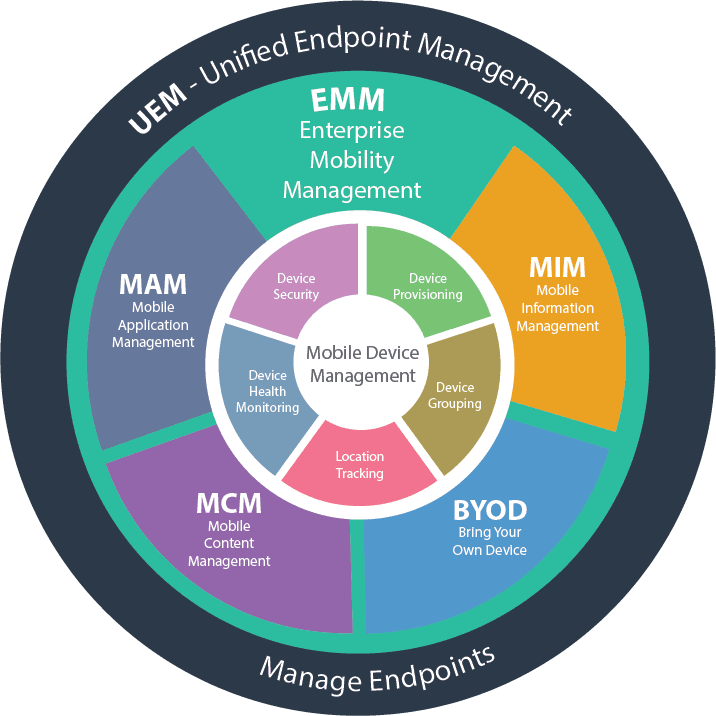Enterprise mobility management (EMM) is software that allows organizations to securely enable employee use of mobile devices and applications.
In addition to addressing security concerns, EMM software also helps employees be more productive, because IT departments can provide them with the applications and data they need to perform work-related tasks on mobile devices.
EMM grew out of mobile device management (MDM), which focused solely on device-level control and security. After Microsoft’s 2015 release of Windows 10, most EMM software providers expanded into unified endpoint management (UEM), which allows IT to manage PCs and mobile devices through a single console.
How EMM has evolved
EMM typically involves some combination of MDM, mobile application management (MAM), mobile content management (MCM) and identity and access management. These four technologies started off as individual products, but they are increasingly available through larger EMM software suites.
MDM is the foundation of any enterprise mobility suite. It relies on the combination of an agent app, which is installed on an endpoint device, and server software running in the corporate data center or in the cloud. Administrators use the MDM server’s management console to set policies and configure settings, and the agent enforces these policies and configures these settings by integrating with APIs built into mobile operating systems.
MAM provides more granular management and security. It allows admins to set policies for a specific app or subset of apps, rather than for the whole device. Some apps have specific MAM APIs built in, while others rely on the device-level MAM APIs in most major mobile operating systems.
With MCM, only approved applications may access or transmit corporate data. And identity and access management controls how, when and where workers may use corporate apps and data, while also offering some user-friendly features, such as single sign-on.
These technologies all address specific concerns, and the overlap between MDM, MAM and MCM is quite minimal. As more organizations embraced enterprise mobility, vendors started to productize EMM, usually by adding MAM or MCM features to their MDM products. An enterprise app store or other self-service portal for application delivery and deployment is also a common component of EMM software.
Microsoft built MDM APIs into Windows 10, which opened the door for EMM software to manage PCs in the same way it manages smartphones and tablets. Apple also allows its macOS desktops and laptops to be managed in this fashion. All major EMM vendors support this functionality, marking a market shift from EMM to UEM.

